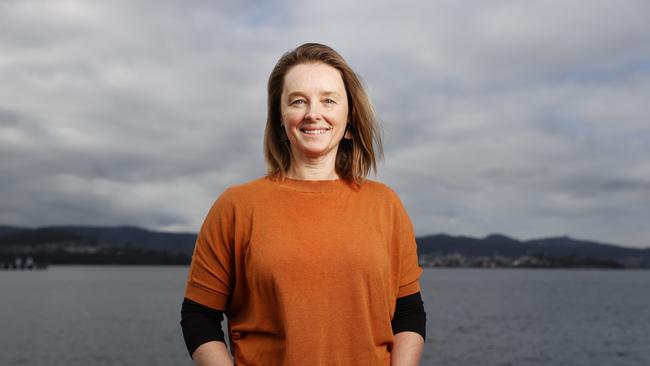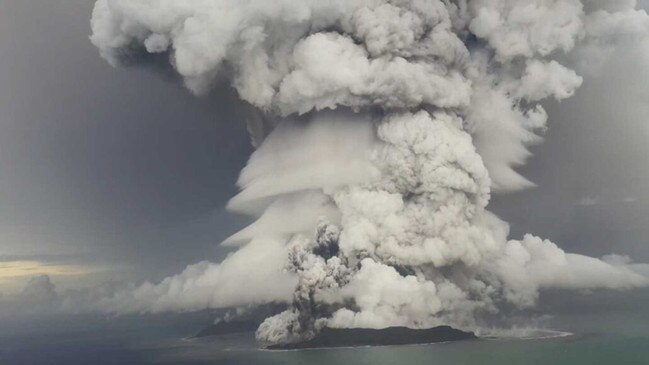Revealed: The Tasmanian research projects allocated $3.5m for ‘critical’ study
Three Tasmanian researchers have been awarded almost $3.5m in funding to continue ‘critical’ research. Here’s what they are exploring >>>
Tasmania
Don't miss out on the headlines from Tasmania. Followed categories will be added to My News.
A volcanologist, a marine geoscientist and an animal immunologist are the Tasmanian researchers receiving almost $3.5m in funding towards their projects of national interest.
Just three Tasmanians were selected out of 100 national projects in the Australian government’s latest ARC 2024 Future fellowship scheme, awarding almost $106.7m in funding.
IMAS marine geoscientist Professor Jo Whittaker is using new and existing data on the movement of the earth to map changes to ice sheets and sea levels from the past and into the future.
“The deep earth, or the molten layers deep within the earth, is where volcanoes come from and those processes can cause uplift and sinking of the earth on quite fast timescales,” Professor Whittaker said.

‘The earth’s movement affects the ice sheet in Antarctica, so I’m interested in seeing and modelling how the ice sheet is affected.”
The $1.2m funding allocation will support Professor Whittaker and a small team of researchers as they model the data to predict future changes to ice sheets and sea levels more precisely.
Professor Whittaker said the funding allocation was “critical” in keeping valuable research and findings advancing in Australia.
“There are always funding opportunities, but not all are attainable for researchers,” she said.
“Money can be the one thing that stops some truly groundbreaking findings from coming forward, so the Australian Government’s Future Fellowships scheme is critical to Australian research.”
University of Tasmania volcanologist Associate Professor Rebecca Carey said the $1.17m funding she received for her project studying submarine volcanoes allows her to keep her “highly impactful research in Australia”.

“With the fellowship, it allows me to build a small group of doctors and PhD students to tackle the data collected from all different angles, where without it I would have to outsource the science to universities around the globe,” she said.
Associate Professor Carey’s exploration focuses on the 2022 eruption of the Hunga-Tonga submarine volcano, which at present cannot be explained by any current models.

The magma from submarine volcanoes also contains metals such as copper and gold, currently being mined in Australia.
“This research has the combined benefit of finding out the risks of these submarine volcanoes, found throughout the Pacific, as well as discovering the cause for eruptions to source these rare metals,” Associate Professor Carey said.
Animal immunologist with the Menzies Institute for Research Dr Andrew Flies hopes to provide further protections for iconic Australian wildlife, including the Tasmanian devil through the $1.06m funding.

After developing vaccines for Devil Facial Tumour Disease 1 and 2 (DFT1 and DFT2) in 2022, Dr Flies and the Devil research team at Menzies will run a series of vaccine trials on the devil population.
“This will be the first in a series of trials on the vaccines, where we will check that it prevents Devils from developing tumours and to see if it can recognise the tumour in the body, so this is naturally going to be a lengthy process,” Dr Flies said.

Another project allocated funding is for the development of rapid diagnostic tests for wildlife diseases, similar to Rapid Antigen Tests for Covid.
Through the Menzies’ work with Bonorong Wildlife Sanctuary, researchers found a need for rapid diagnosis to ensure fast treatment for wildlife.
“Bonorong carers were having to test animals for diseases and get these tests sent to interstate labs, which could take a day or more to get results from,” Dr Flies said.
“By that time, carers would have to make the decision whether to put down or free an animal without knowing.
“Rapid tests could give better treatment and down the track with research, harness the potential to test for multiple deadly disease, like wobbly possum disease, at once.”





